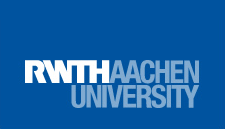
- Diese Veranstaltung hat bereits stattgefunden.
Doma: Numerical and Perceptual Evaluation of HRTF Accuracy
Head-related transfer functions (HRTFs) describe the interaction between the listener’s body and incident sound waves, as they travel from an arbitrary source position to the left and right ear canal entrances. By reproducing spatial cue information for various directions, a multi-dimensional HRTF data set allows for synthesizing virtual sound sources, i.e., artificially creating the impression of a source positioned in space. The use of individually tailored HRTFs – with listener-specific cues acquired, e.g., through direct measurement, simulation, or various approximation approaches – has been shown to provide an improved virtual audio experience compared to the use of generic (non-individual) data. To validate new and further improve existing HRTF acquisition methods, a meaningful representation of spectral deviations between the data sets is required. This representation should be multi-dimensional to allow for various types of possible distortions to be captured. It is furthermore sought to identify the needed level of spectral accuracy by establishing a relationship between the numerical representation and the perceptibility of the error, as, below this just noticeable difference (JND) threshold, it would be neither necessary nor beneficial to further optimize the different approaches for HRTF acquisition.
The present work focuses on differences in magnitude spectra and the ensuing disparities in monaural cue information. The goal is the step-wise derivation of a parametric model that can predict the likelihood of discriminating between two arbitrary HRTF pairs upon use in binaural synthesis under free-field conditions. To this end, a listening test paradigm is developed for examining the detectability of uni-lateral HRTF differences. Based on the acquired perceptual data, a monaural JND model is derived, building on the common variance of a set of three numerical error metrics. In turn, this model serves as a basis for a subsequent bi-lateral variation experiment. A binaural JND model is thereupon deduced, which is applicable to simultaneous changes in HRTF spectra within both ear signals. Finally, the derived monaural and binaural models are applied in various HRTF comparisons involving different acquisition methods, in order to assess the audibility of commonly present distortions. In many cases, the results highlight a direction-dependent perceptibility of the distortions, which is related to the spectro-spatial properties inherent to the HRTF sets. The assessment further enables a better understanding of the behavior and limitations of the models.
Melden Sie sich hier an um Einladungen zu den Kolloquium-Vorträgen per E-Mail zu erhalten.
Register here to receive the invitations to colloquium talks via e-mail.
Zoom-Meeting-ID: 954 4073 3814
Passwort: 450783

